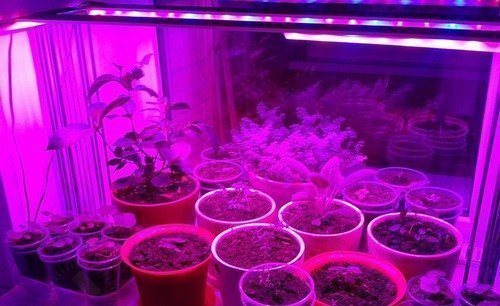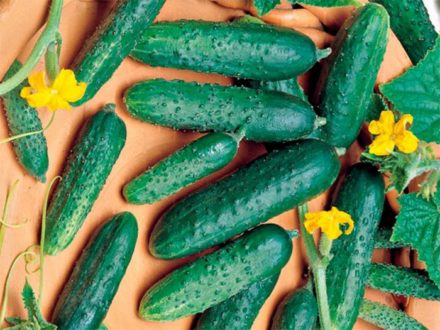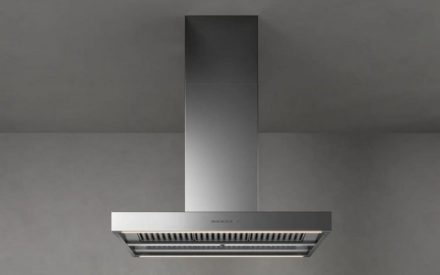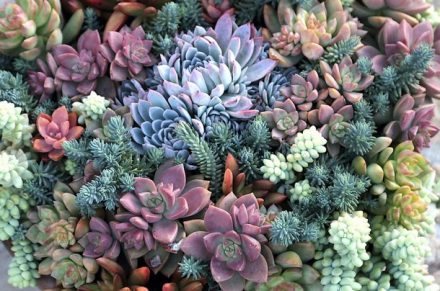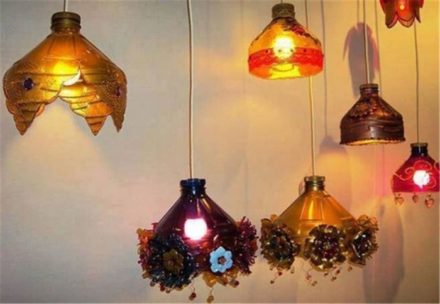Every gardener who grows seedlings on his own, and this happens in February-March, is faced with a catastrophic lack of sunlight. Due to its deficiency, the process of photosynthesis decreases, as a result, the root system weakens, the plants become elongated, and later this affects the yield. Even if the boxes are placed on the windows of the south side of the apartment, you have to resort to artificial lighting. The proper development of seedlings depends on the correct choice of lamps.
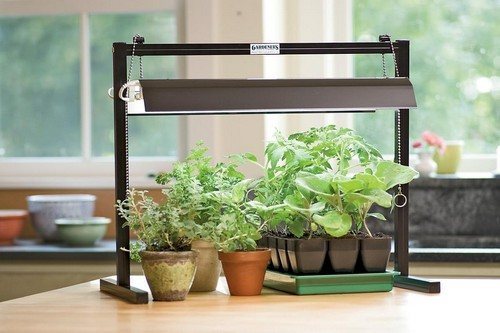
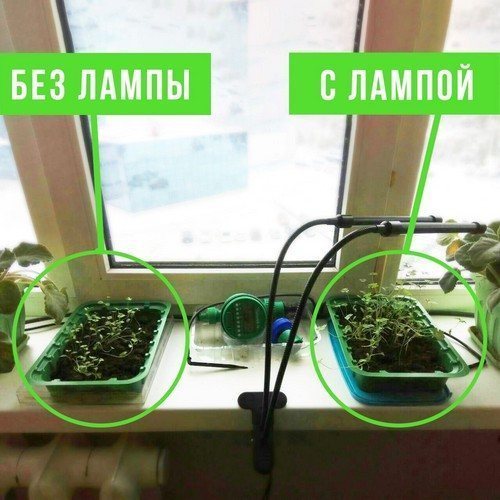
The role of spectral radiation in healthy plant formation
Laboratory studies have shown that any crop needs a complex spectrum of light, even if not in the full range, but its most important components must certainly be present. So:
- with enough red and orange light, plants actively develop and quickly increase their green mass;
- Blue and violet rays enhance photosynthesis processes and give seedlings strength. They are necessary for plants during the growing season;
- yellow and green rays resist excessive photosynthesis. Their excess leads to the stretching of seedlings, their weakening and exhaustion.
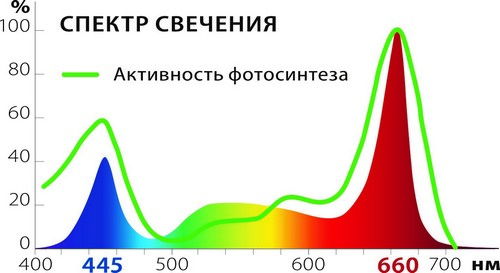
Main criteria when choosing lamps
It is necessary to rely on the radiation spectrum, which is close to natural, when choosing lamps for supplementary illumination of seedlings on the windowsill, so that they do not harm the plants, but help their healthy development. Before purchasing, you need to calculate the area that needs to be illuminated.For window sills, this figure ranges from 40-45 W/m2.
Tip 1
When choosing fluorescent lamps (LB; LBT), it is worth remembering their low power. To illuminate even one box you will need 3-4 lamps, and this is an extra waste of electricity. In addition, their emission spectrum contains very little red and orange. Lamps such as LD and LDC for the home can become oppressors of seedlings. Low price, ease of installation and the ability to slightly heat the air are their main advantages.
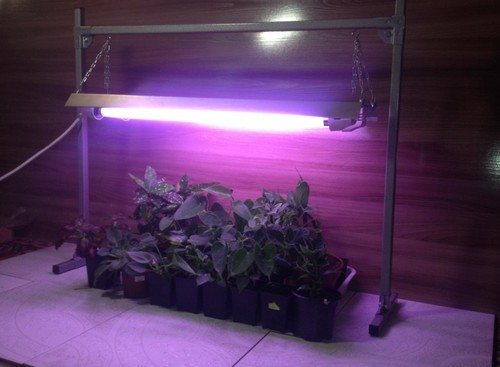
Tip 2
By choosing phytolamps (they are listed on the packaging as phytoluminescent), you can be confident in their safety, reliability, high efficiency and effectiveness. Such lamps have different dimensions, making it easy to select the desired length that matches the width of the window.
Among them there are phytolamps of mirror types, such as “Enrich”. They produce a beam spectrum that does not irritate the optic nerve. But “Phytotsvet D”, although it does not overheat the seedlings even with a long operating time, the main component of the spectrum is violet-pink rays, which require precise directionality. You can’t do this without reflectors, otherwise such light has a hard effect on the human nervous system. Any type of phytolamps has a long service life.
Tip 3
Reflax lamps belong to a large series of sodium lamps (DNaT, DNa3). Some of them are already equipped with reflectors capable of directing the beam of light in the desired direction.
At a high price, they have sufficient energy-saving ability. Orange-yellow, warm light does not irritate the membranes of the eyes.Sodium lamps have a number of disadvantages: installation complexity; high electricity consumption; some types have large flasks that make installation on a window difficult; If installed incorrectly, such lamps can cause burns to plants; predominate in the red light spectrum and do not allow the seedlings to be sufficiently provided with the blue light spectrum.
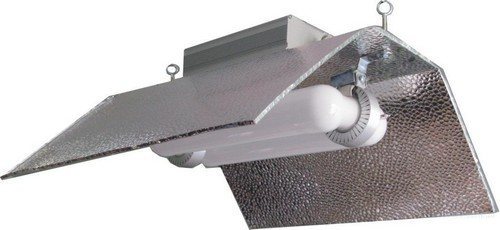
Tip 4
LED phytolamps will be much more expensive in price, but with proper quality it will soon pay off, since their service life is calculated in years, even if they work 24 hours a day (manufacturers guarantee up to 50,000 hours). Small sizes allow you to select the required number of lamps.
These are the most economical lamps: compared to fluorescent lamps, they consume 3.5 times less electricity. They give a very bright and uniform light output. Their spectral composition is dominated by blue and red rays, while others remain within the norms sufficient for plants.
Ease of installation is another advantage of LED lamps. In such a lamp, you can increase the level of spectral radiation at any time; just replace the LEDs with more powerful ones.
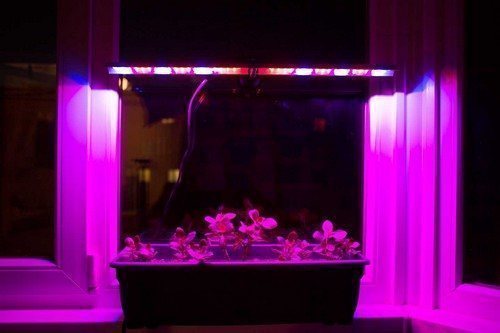
Tip 5
Metal halide lamps are considered a good substitute for the sun for young crops.
Their spectrum is dominated by blue and ultraviolet rays, which are necessary for hatching seeds. Suitable for lighting at the initial stage of development. Once the ovaries form, they are turned off. The disadvantage is the high price and the ability to explode when exposed to moisture; the advantage is the long service life if used correctly.
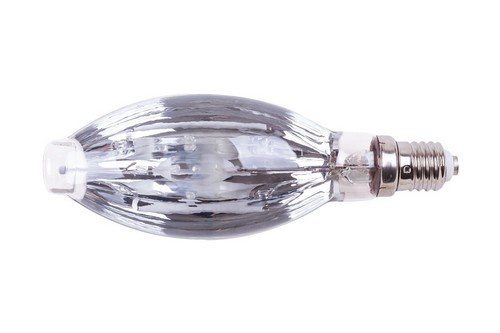
Tip 6
Induction lamps are innovative devices where the light source is plasma with the main spectral ranges: red and blue.
The disadvantages of the devices are additional heat generation (they can heat up to 700 degrees, which means they dry out the soil in the boxes). They are dangerous to use for lighting seedlings on window sills made of any material; such installations are more convenient to use in greenhouses, or to be removed at a great distance from crops.
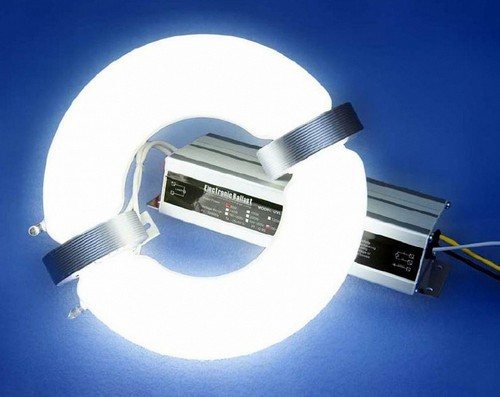
Tip 7
In addition to choosing the type of lamp, it is worth understanding its shape: round ones are convenient for individual pots with plants, and often have a standard base that allows them to be used in ordinary table lamps; linear are suitable for row seedlings; rectangular - for a large volume of seedlings grown on racks; tape helps create lighting of any shape; Spotlights are recommended for illuminating a large area from a long distance.
Tip 8
Warranty periods are an important criterion when choosing lamps. Conscientious manufacturers provide a guarantee of at least 2 years.
Tip 9
The quality of the materials from which the lamps are made is the key to their durability. Designs made of aluminum, high-strength plastic, and steel are distinguished by their reliability.
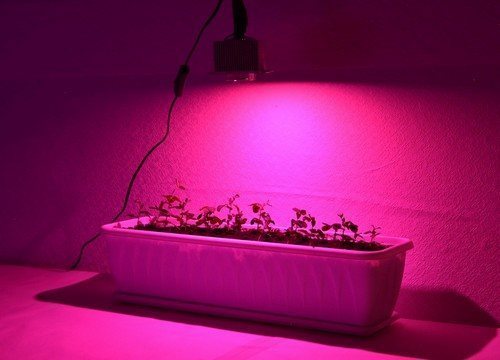
Duration of illumination depending on the crop being grown
Tomato seedlings are most demanding of light; for normal development, they need to be under the rays for up to 15-17 hours a day. For eggplants and peppers, 11-12 hours are enough, for greens - 10 hours. It is not recommended to turn on the lamps for the entire daylight hours, the best option is 2.5-3 hours in the morning (before dawn), for the same time in the evening, illuminated a little longer on cloudy days weather.
The distance from the light source to the seedlings is determined by its power (indicated in the instructions). The lower it is, the shorter the distance. You can determine it with your hand by sticking it under the light stream: if the heat is felt strongly enough, the device is raised higher.
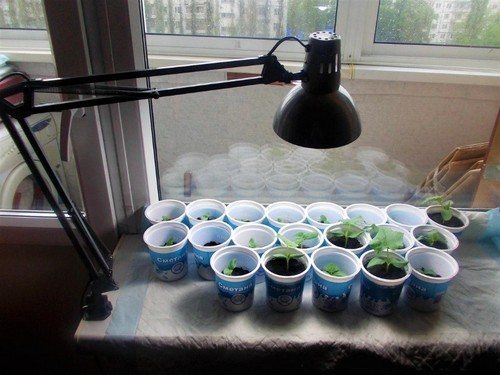
Important! Conventional incandescent lamps are not suitable for lighting seedlings!
In order for artificial insolation to have the desired result, two main conditions must be met: choosing the right location and choosing the right light sources. However, none of them can replace the energy of the sun.


